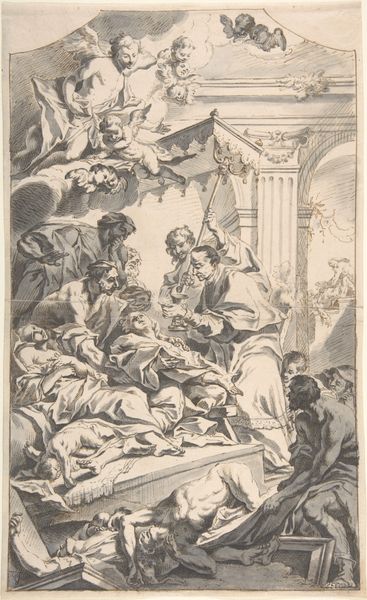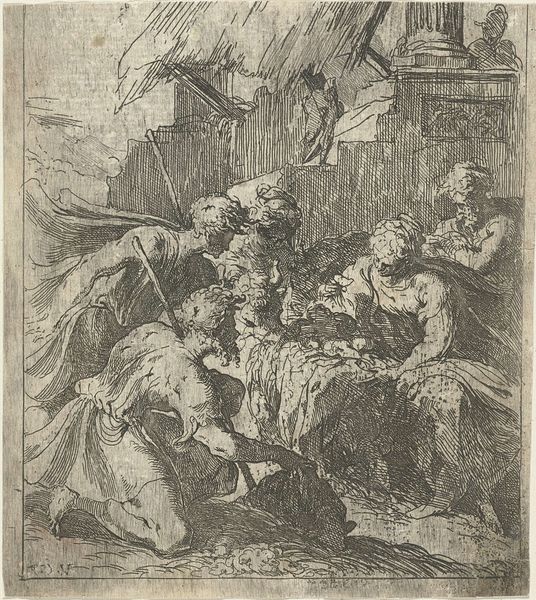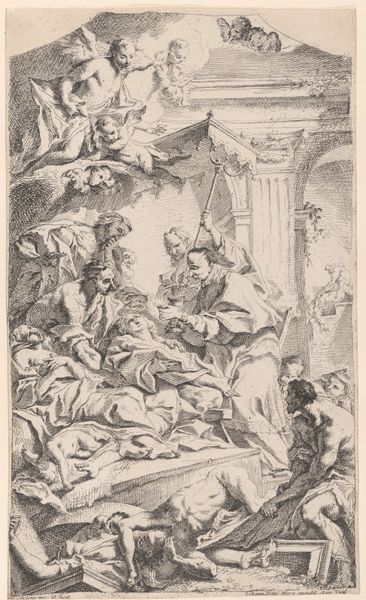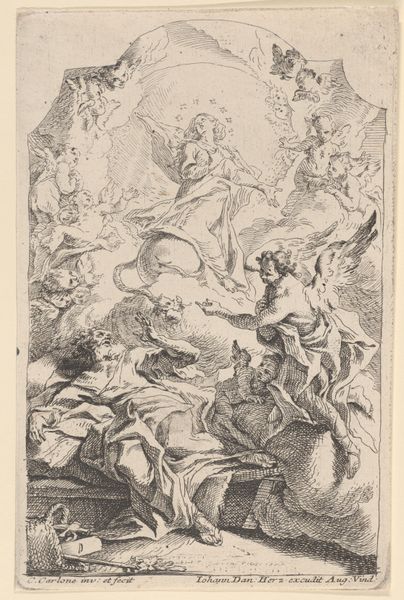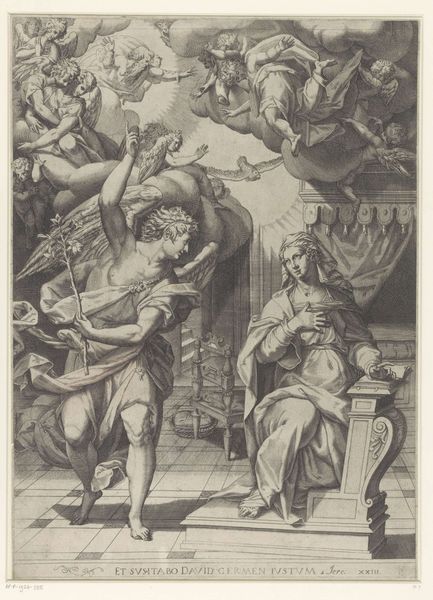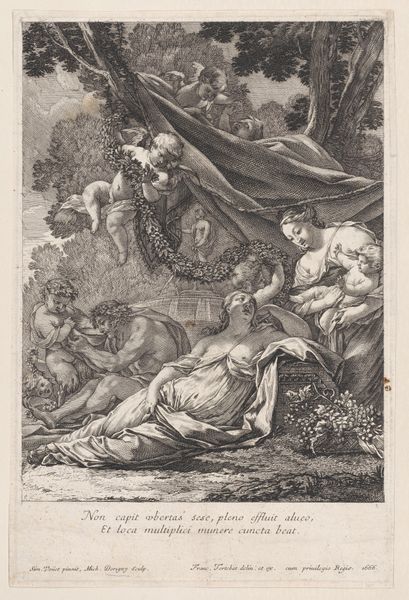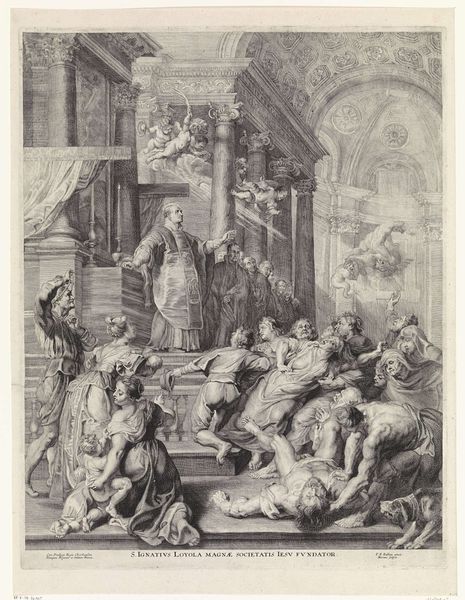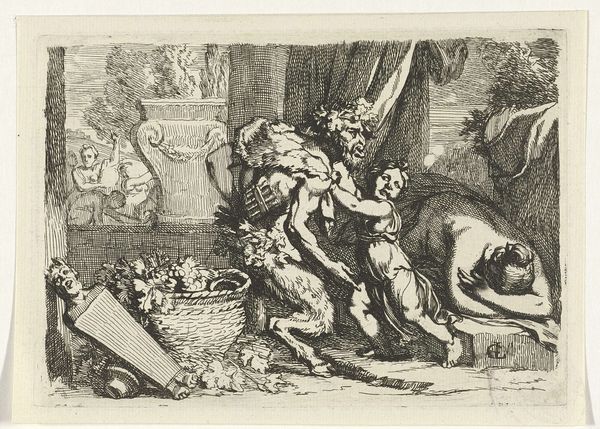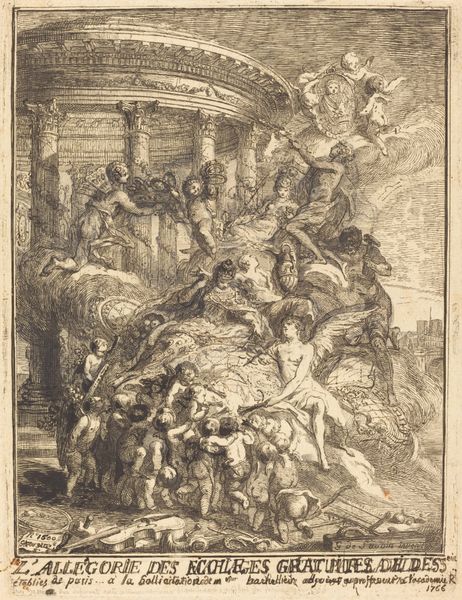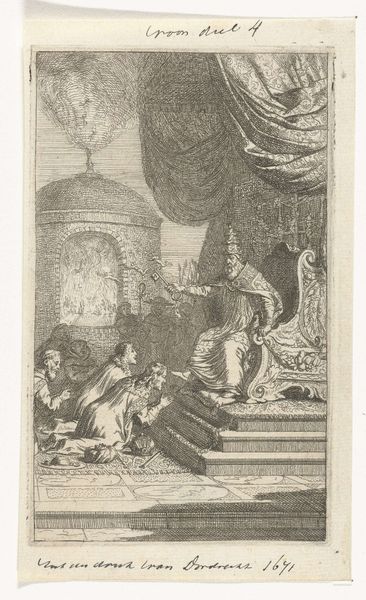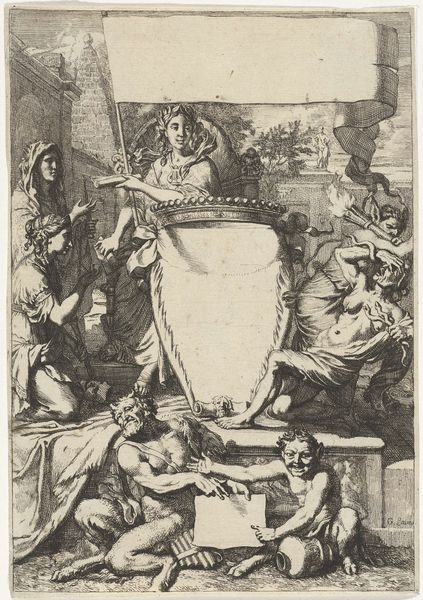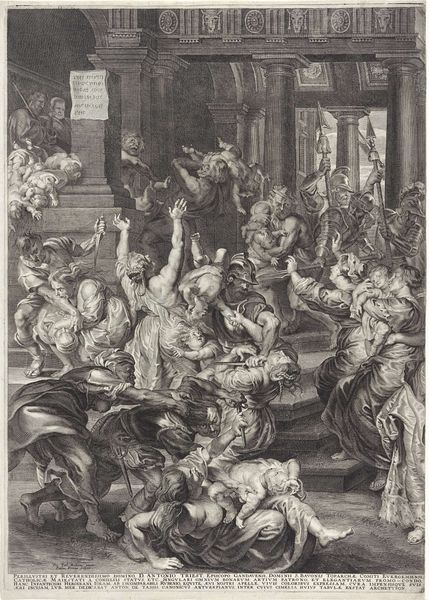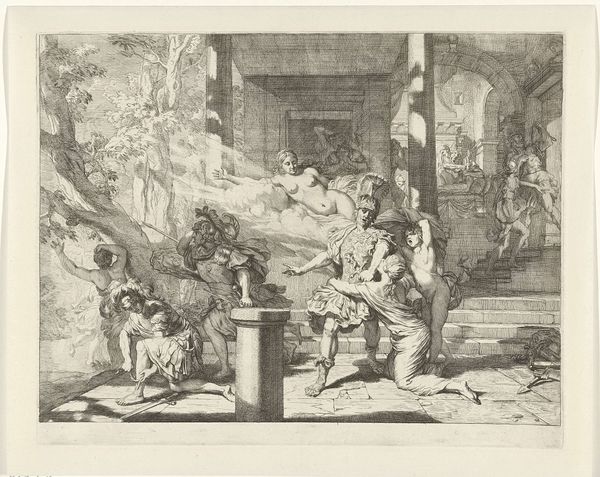
engraving
#
allegory
#
baroque
#
old engraving style
#
history-painting
#
engraving
Dimensions: height 180 mm, width 128 mm
Copyright: Rijks Museum: Open Domain
Gerard de Lairesse created this print, 'Death of Dido', using etching, a printmaking technique, in the late 17th century. With etching, a metal plate is coated with a waxy ground, and the artist draws into this ground with a needle, exposing the metal. The plate is then immersed in acid, which bites into the exposed lines, creating an image that can be inked and printed. The stark contrast of the lines and shading, achieved through the controlled biting action of the acid, imparts a dramatic intensity to the scene of Dido's death. This method allowed for intricate details, which we can see in the depiction of the classical figures, fabric, and architectural elements, enriching the visual narrative. The choice of etching as a medium also speaks to the wider social context of art production. The etching process, while requiring skill, allowed for the reproduction of images, which made art more accessible. By understanding the process and materials behind this print, we gain insight into the intersection of artistic skill and the means of production in the late 17th century.
Comments
No comments
Be the first to comment and join the conversation on the ultimate creative platform.
